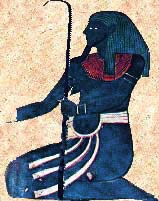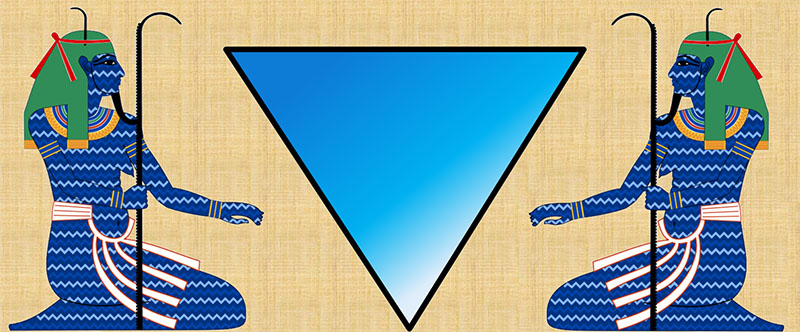venicebard
It is true that these are the sun’s northern and southern limits, but dynamically it is in aries that the sun is hurrying north fastest, in libra that it is hurrying south fastest, and indeed we still speak of north as up (towards aries-the-head), south as down (towards libra-the-loins). Yet it is true that cancer is the beginning of manifestation (breath) and capricorn the end of manifestation (self-knowledge), since it is the lower half of things that is manifested.nigromancer700 said:Also there is a possible Neoplatonic slant on this card in which the female figure is a river-nymph, a Naiad and the imagery links up with Porphyry's tract 'De Antro Nympharum' (’On the Cave of the Nymphs‘), a mystical reading of the ‘cavern of the nymphs’ in the land of Ithaca described in chapter 13 of Homer’s ‘Odyssey’:
“…a cavern that offers welcome shade and is sacred to the Nymphs we call Naiads. This cave contains a number of stone basins and two-handled jars…and there are springs whose water never fails. It has two mouths. The one that looks north is the way down for men. The other, facing south, is meant for the gods.”
(The Odyssey, trans. E.V. Rieu)
Porphyry presents this mythos as an allegory of the passage of the soul into incarnation and mortality and its journey to liberation. Souls enter into the realm of generation via the northern Gate of the Moon, Cancer; they discarnate via the southern Gate of the Sun, Capricorn, which opens onto transcendence and the path to ‘bright Olympus’. The nude Naiad is the ‘Nymph of the Springs’ pouring a stream of glittering waters onto the earth, symbolic of the souls entering into the mortal state through the Gate of Man.
Yet the ‘eighth heaven’ would be the second emanation in Lurianic Kabbalah, that is, associated with the number 2 or first deviation from Unity (in the physical or fourth world). This emanation (in the fourth world), by the way, corresponds to the cycle of precession (~26,000 years).The eighth heaven was regarded by the mediaeval cosmologists as the realm of the fixed stars, according to Platonist teaching the sphere of Divine Mind (Nous), the Mind of God which as Cornelius Agrippa correlates with the ‘starry heaven, where he fabricateth so many figures as he hath Ideas in himself.’
I think of XXI LeMonde as ‘victory’, since it is the world (the palm tree, by bardic reckoning) and XVII L’Etoille as ‘consummation’ or ‘coming of age’ (I repeat: she is the mixing of the elixirs in love’s consummation, and the trump even shows the soul-in-the-form-of-a-bird awaiting the conception of that which is to be its body). XXI symbolizes victory because it is that which follows upon XX, or the presence of two competing ten-fingereds or graspings (desire in two individuals)—namely, the victory of one of them (actually of both of them, for in a fair fight BOTH win honor).Regarding the numerological symbolism here we might note that John Heydon in his book ‘The Holy Guide’ (1662) says: ‘The number Seventeen is called of R. Lully, a Number of Victory…’ which I suppose would be the fulfilment of a hope.
One last thing. You might consider where your analysis takes us if, as I maintain, the Odyssey is in essence satirical: not heroic like the Iliad (forged in battle), but anti-heroic (forged in hospitality versus the inhospitable).






